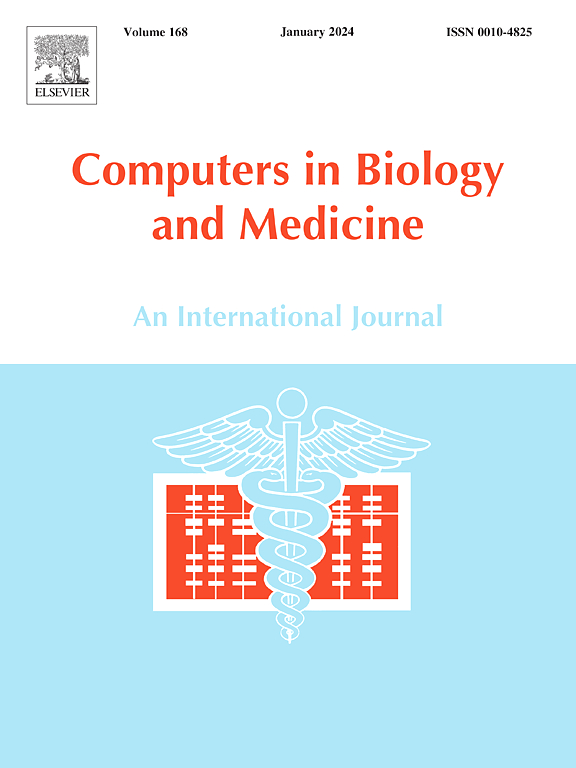骨重塑因子和种植体弹性模量变化影响下种植体稳定性的生物力学评价
IF 7
2区 医学
Q1 BIOLOGY
引用次数: 0
摘要
背景与目的生物现象的模拟可以帮助医生在计算机模型结果和工程分析的基础上制定先进的治疗方案和方法。这些模型的应用可以预测和评估医学实验产出,消除了技术和实际限制以及昂贵的实验室设备的障碍。这为学者们提供了设计实际实验的预览和洞察力,节省了成本,精力和时间。本研究旨在提供一种基于有限元计算的骨质疏松条件下下颌骨重塑模拟,并利用种植体稳定商(ISQ)指标来量化和评估种植体的稳定性。骨保护素(OPG)、转化生长因子β (TGF-β)、甲状旁腺激素(PTH)等参与骨重塑的重要化学因子的影响以及种植体弹性模量的影响也被纳入模型。文献缺乏考虑这些化学物质对种植体稳定性的比较影响的预测组合模型,这是由本研究解决的。方法利用CT图像数据集建立下颌骨与Straumann种植体组装后的三维几何图形。将模型几何图形导入有限元软件,定义材料特性、边界条件、约束和数学关系。该模型的基本参数是基于其他已发表的作品。建立几何网格,并引入骨重塑偏微分方程。在我们的研究中,咀嚼力假设为常数,阻尼系数为零。最后,利用计算出的种植体-下颌骨部分组合的共振频率来获得和评估种植体稳定商。结果TGF-β剂量率增加6%时,ISQ值较基线增加24.28%,种植体弹性模量12.5 GPa使ISQ值较基线相对增加21.55%。通过网格收敛性和灵敏度研究验证了结果的准确性。结论TGF-β对ISQ生长的影响最为显著,种植体弹性模量接近下颌骨等效弹性模量平均值时,ISQ值显著升高。本文章由计算机程序翻译,如有差异,请以英文原文为准。

A biomechanical assessment of dental implant stability under the effect of changes in bone remodeling factors and implant elastic modulus
Background and objective
The simulation of the biological phenomena can assist physicians in development of the advanced therapeutic plans and methods based on the computer model results and engineering analysis. The application of these models can predict and evaluate the medical experiment output by removing the barriers of technical and practical limitations, and expensive laboratory equipment. This provides the scholars with the preview and insight to design practical experiments and save cost, energy, and time. The present study aimed to provide a calculational, finite element-based simulation of the mandible bone's remodeling under the osteoporosis condition to quantify and evaluate the stability of a dental implant using the indicator implant stability quotient (ISQ). The effects of the significant chemical factors involved in bone remodeling including osteoprotegerin (OPG), transforming growth factor beta (TGF-β), and the parathyroid hormone (PTH) as well as the effect of the implant's elastic modulus were also included in the model. The literature lacks a predictive combinatory model considering the comparative effects of these chemicals on the implant stability which was addressed by this study.
Methods
A 3D geometry of the mandible portion assembled with a Straumann implant geometry was developed using a CT image dataset. The model geometries were imported to finite element software for the definition of the material properties, boundary conditions, constraints, and mathematical relations. The model's basic parameters were based on other published works. A mesh of the geometry was created and bone remodeling partial differential equations were incorporated. The mastication force was assumed constant and the damping factor was considered zero in our study. Finally, the calculated resonance frequencies of the implant-mandible portion assembly were utilized to obtain and assess the implant stability quotient.
Results
The results showed that a 6 % increase in the dosage rates of TGF-β had the highest increase in ISQ values to 24.28 % from the baseline and the implant elastic modulus of 12.5 GPa caused a 21.55 % relative growth in the ISQ value of the baseline. The accuracy of the results was tested by the mesh convergence and sensitivity studies.
Conclusions
Based on the results, TGF-β had the most significant effect on the growth of ISQ, and the implant elastic modulus remarkably increased ISQ values when its value was close to the average values of the mandible equivalent elastic modulus.
求助全文
通过发布文献求助,成功后即可免费获取论文全文。
去求助
来源期刊

Computers in biology and medicine
工程技术-工程:生物医学
CiteScore
11.70
自引率
10.40%
发文量
1086
审稿时长
74 days
期刊介绍:
Computers in Biology and Medicine is an international forum for sharing groundbreaking advancements in the use of computers in bioscience and medicine. This journal serves as a medium for communicating essential research, instruction, ideas, and information regarding the rapidly evolving field of computer applications in these domains. By encouraging the exchange of knowledge, we aim to facilitate progress and innovation in the utilization of computers in biology and medicine.
 求助内容:
求助内容: 应助结果提醒方式:
应助结果提醒方式:


